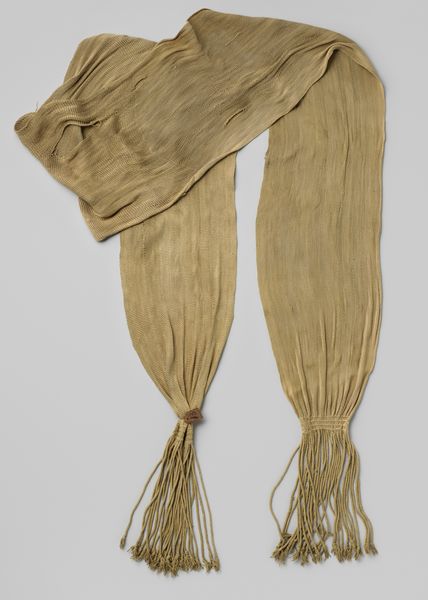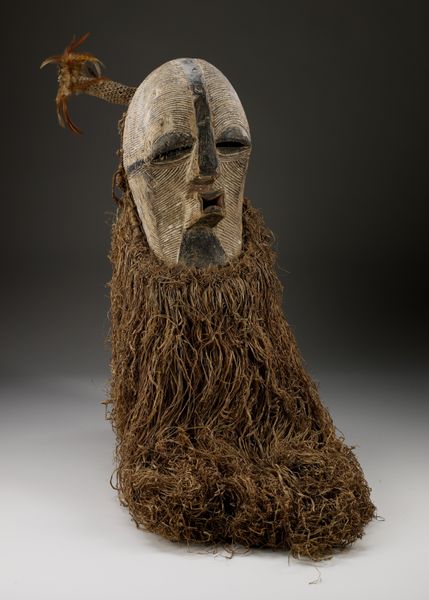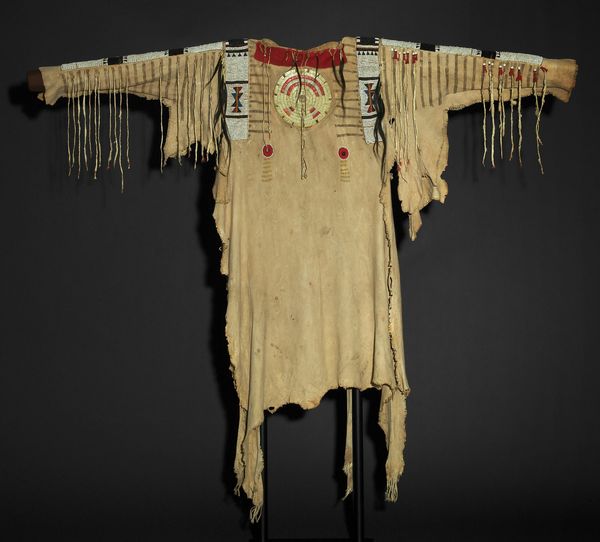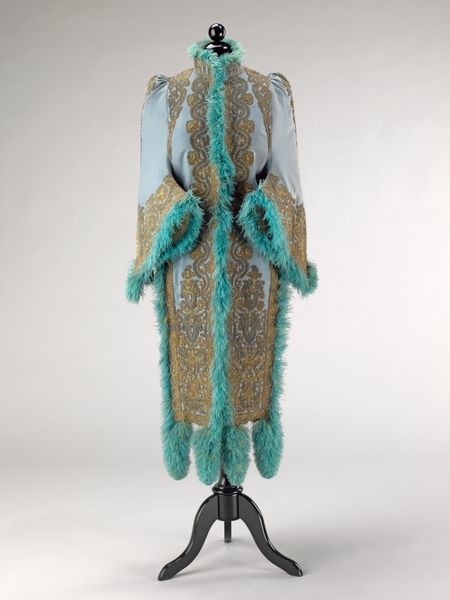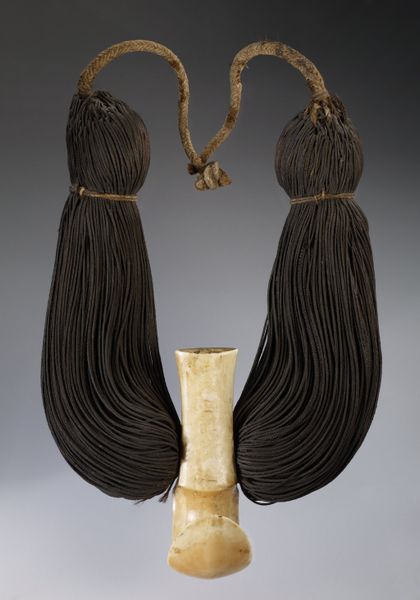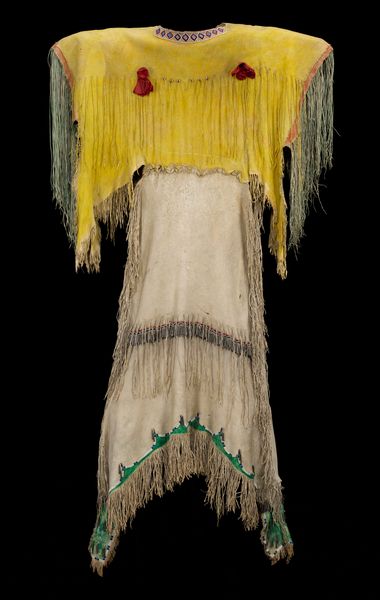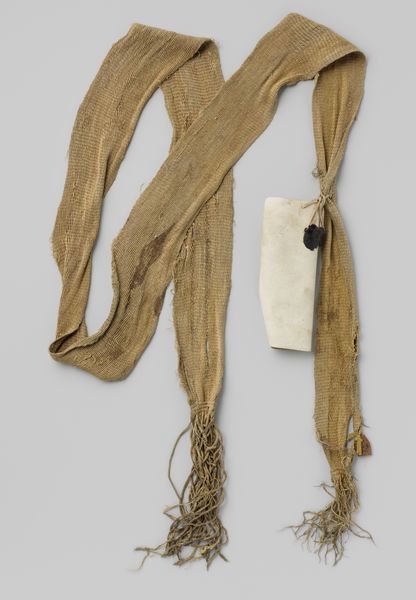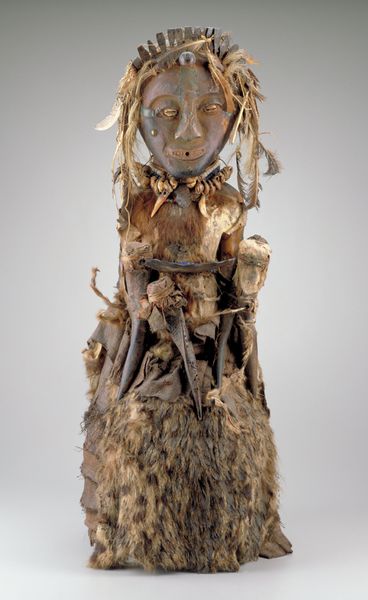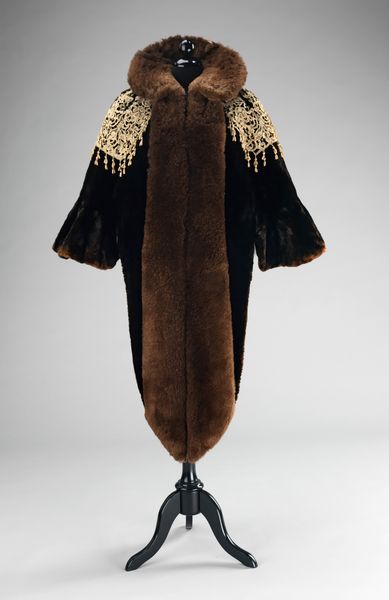
sculpture, wood
#
sculpture
#
figuration
#
sculpture
#
wood
Dimensions: 84 x 28 x 13 1/2 in. (213.36 x 71.12 x 34.29 cm)
Copyright: Public Domain
Editor: Here we have the "Doroe Spirit Mask," dating to the 20th century, from the Asmat people. It’s currently housed here at the Minneapolis Institute of Art. It’s made of wood and what looks like plant fibers. It's strangely compelling... What’s your take on this piece? Curator: It is striking. When I look at this, I consider the mask not just as an object, but as a nexus of cultural forces. How did this particular mask end up in a museum setting like this, far from its original context? It raises questions about collecting practices, the representation of indigenous cultures, and even the perceived value we place on objects like these. How do you think its display impacts our understanding? Editor: It’s hard to say for sure… it’s definitely removed from its original setting. I can imagine it was pretty different experienced in its original context versus now here. I wonder about what purpose these masks served in the Asmat community? Curator: Precisely! We need to think about its role within the Asmat culture. These masks weren't simply decorative; they were active participants in rituals and ceremonies. The act of creating and wearing the mask was a potent expression of connection with the spiritual world. Consider also the resources used; were they locally sourced, indicative of trade routes, reflecting particular social dynamics in play at the time of its creation? Editor: So the journey of the mask, from its original cultural context to its display in a museum, is really central to its meaning, right? Curator: Absolutely. Museums, like this one, play a crucial role in shaping our understanding, by preserving these works. It's important to consider how those interpretations are formed and the politics involved. Editor: I never really thought about how a mask like this ended up in a museum and the layers of meaning it acquires through that process. It changes everything about how I perceive it. Curator: Exactly! Art history encourages us to think critically about the structures of power that influence how we see and understand art.
Comments
minneapolisinstituteofart almost 2 years ago
⋮
The doroe is a full body mask that is worn during the Jipae ritual. This ceremony is performed to expel the spirits of deceased kin from a village so they do not return and bring misfortune to those still living. A relative of the ancestor typically wears the mask, a respected task because it requires strength and courage to summon the spirits of the dead. The Jipae ritual begins when the masked figure enters the village and presents itself to the family of the deceased. While spending time with family and friends, the spiritual figure becomes highly demanding of food and attention. In order to eliminate the ancestral spirit's opportunity of returning to the village, the family attacks and ritually kills the mask. The top portion of the costume is then brought to the jungle and placed on top of a young sago palm. When the tree grows, the mask will be raised towards the sky, representing the deceased person's journey to Safan, the land of the dead. This ritual is a way of freeing the souls of the deceased from the earthly world.
Join the conversation
Join millions of artists and users on Artera today and experience the ultimate creative platform.

